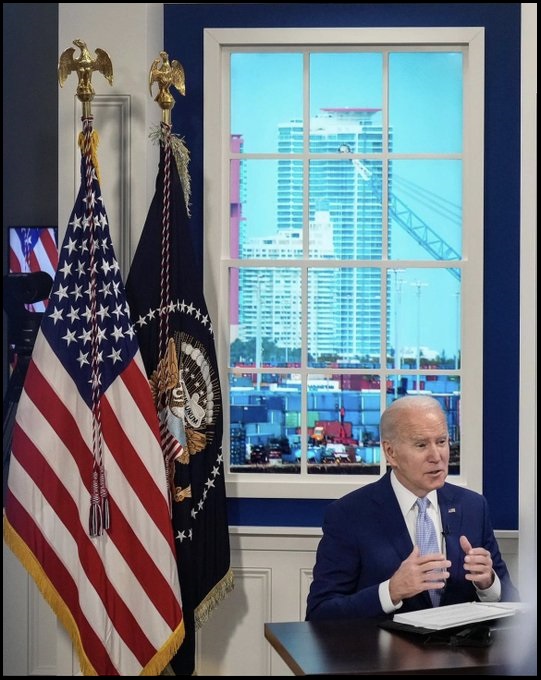
by Sundance at The Conservative Treehouse
Remember that fourth quarter GDP result that seemed manipulated? Well, I suspect the record setting trade deficit now being reported for January is an outcome of those pesky fourth quarter trade results being intentionally skewed by the withholding of December 2021 import data.
 Additionally, methinks we are likely to get some increased economic clarity about why the White House needed Ukraine to become the big shiny thing with such urgency.
Additionally, methinks we are likely to get some increased economic clarity about why the White House needed Ukraine to become the big shiny thing with such urgency.
Just like everything else, geopolitical dynamics –especially those surrounding entrenched ideology– are always about the economics. Someone, eventually, always has to pay. Follow the money; there are trillions at stake.
First, keep in mind that missing Port of Los Angeles result from December as you review the import/export details:
(REUTERS) […] The goods trade deficit jumped 7.1% to an all-time high of $107.6 billion last month. Imports of goods increased 1.7%, led by food and motor vehicles. There were also large increases in imports of industrial supplies, capital and consumer goods. Imports of other goods, however, tumbled 15.3%.
Exports dropped 1.8%, weighed down by consumer goods, motor vehicles, food and other goods. But exports of capital goods and industrial supplies increased. Trade has been a drag on gross domestic product for six straight quarters. (read more)
That missing Port of LA December import data, now being introduced into the month of January, might just be the cause of the “all time high” noted above. I will bet one sustainable rice cake on it.
Next up, inflation.
As we have outlined exhaustively, inflation comes in waves because inflationary costs flow like tides within the overall supply chain. The three stages are Origination (commodity), Intermediate (processing), and then Final (to wholesale).
Inflation on raw materials flows into the pricing, then layers of energy inflation overlap the material and labor costs, and eventually the final product exits with the full weight of higher costs embedded.
Additionally, the payment for goods has terms of 30, 60, 90 or 180 days depending on the sector. Pricing contracts are then reset with each new purchase order. Price increases can sometimes lag in this process depending on whether the retailer needs the proceeds from the ending sales to fill the banking exchange account and pay the supplier:…
Continue Reading